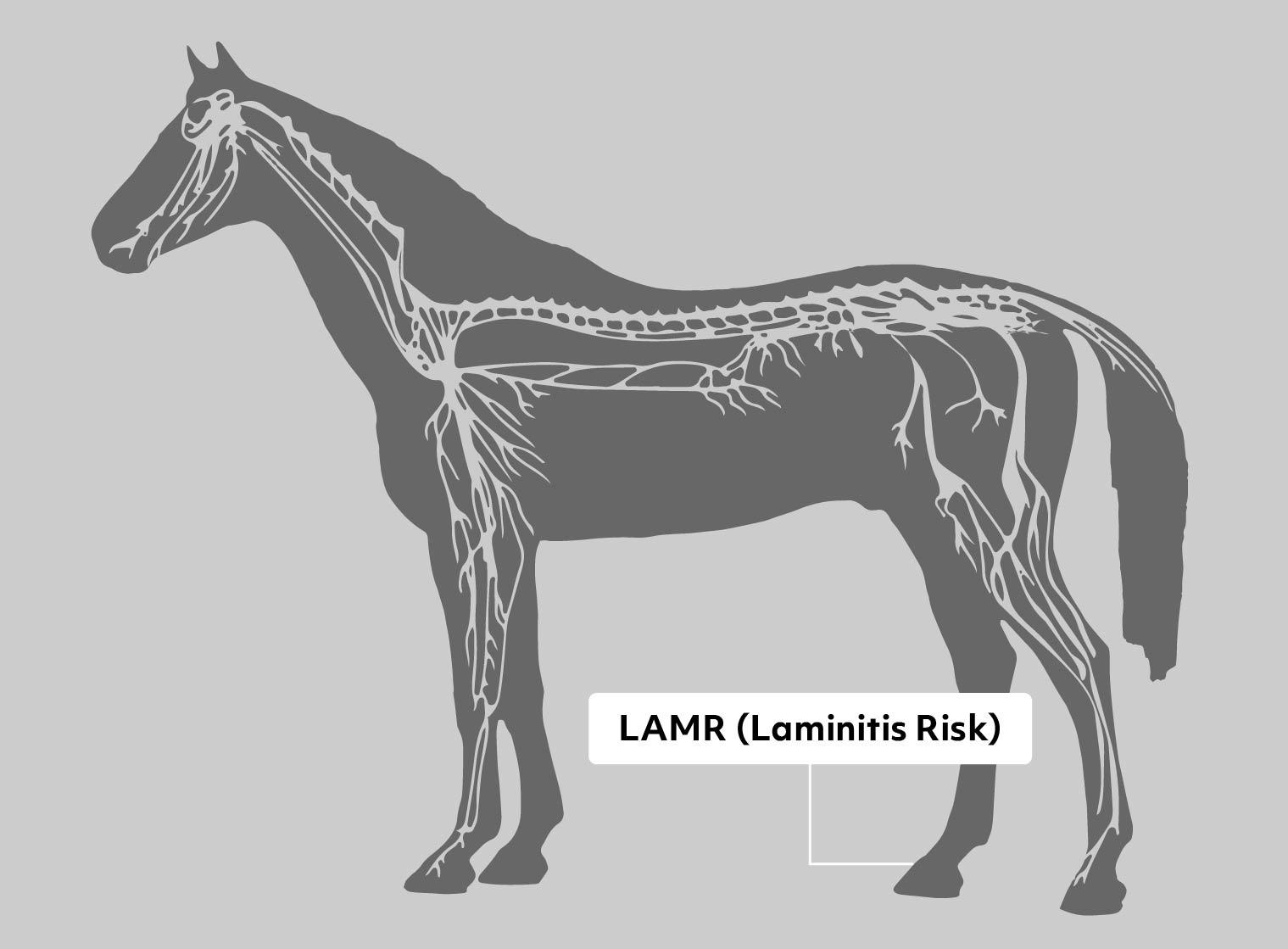Equine Metabolic Syndrome / Laminitis Risk (EMS / LAM)
Gene or Region: FAM174A
Reference Variant: T
Mutant Variant: C
Affected Breeds: Many
Research Confidence: Preliminary - Strong correlation in early studies, results have shown strong correlation in early studies of Arabian population
Explanation of Results: EMS/EMS = homozygous for Equine Metabolic Syndrome, at risk for EMS and increased risk for EMS-related Laminitis EMS/n= heterozygous for Equine Metabolic Syndrome, at risk for EMS and increased risk for EMS-related Laminitis n/n = no variant detected
General Description for Equine Metabolic Syndrome
Equine Metabolic Syndrome (EMS) is a wide-spread issue in the horse population. Primarily characterized by hyperinsulinemia (excess insulin circulating in the blood in relation to glucose levels), this metabolic disorder is often present in obese horses and ponies and can be challenging to diagnose as it can be misdiagnosed as "Cushing's" (a pituitary disfunction). Few treatments exist for EMS outside of diet management and exercise, which increases the need for early detection and prevention. Should obesity be allowed to set in, secondary chronic conditions, such as Laminitis can easily follow and further compromise the health of the horse. Breeders have also observed that horses with a tendency toward obesity (EMS) can also be difficult to manage in a reproductive environment (difficult to get in foal).
A genomewide association study (GWAS) using Arabian horses with a history of severe Laminitis secondary to EMS revealed significant genetic markers near a single candidate gene that may play a role in cholesterol homeostasis. This same genetic candidate correlated with a 9 time greater risk for Laminitis in horses with one or more variants that were also overweight/obese.
EMS Risk
-/- = n/n - No EMS variants detected. Normal risk for EMS and Laminitis +/- = EMS/n - One EMS variant detected. Horse is at risk for EMS and at increased risk for Laminitis +/+ = EMS/EMS - Two EMS variants detected. Horse is at risk for EMS and at increased risk for Laminitis (9 times greater risk than "normal" horses with no EMS variant)
EMS-Related Laminitis Risk
-/- = n/n - No EMS-LAM variants detected. Normal risk for EMS-related Laminitis +/- = EMS/n - One EMS-LAM variant detected. Horse is at increased risk for EMS-related Laminitis* +/+ = EMS/EMS - Two EMS-LAM variants detected. Horse is at increased risk for EMS - related Laminitis*
*9 times greater risk than "normal" horses with no EMS variant
References
Lewis, S. L., Holl, H.M, Streeter, C., Posbergh, C., Schanbacher, B. J., Place, N. J., Mallicote, M. F., Long, M. T., Brooks, S. A. (2017) Genomewide association study reveals a risk locus for equine metabolic syndrome in the Arabian horse. J Anim Sci 2017 Mar;95(2) 1071-1079
More Horse Health
"Warmblood" Fragile Foal Syndrome
"Warmblood" fragile foal syndrome (FFS) is a connective tissue disorder resulting in joint laxity and extremely thin skin that is only loosely connected to the body. The skin is easily torn, resulting in lacerations, hematomas, and seromas across the foal. Affected foals are euthanized shortly after birth.
Androgen Insensitivity Syndrome
Androgen Insensitivity Syndrome (AIS) is an X-linked disorder of sexual development resulting in a female horse with XY chromosomes. Horses with AIS exhibit stallion-like behavior such as agression toward other horses, Flehman response and vocalization toward cycling mares.
Cerebellar Abiotrophy
Cerebellar Abiotrophy (CA) is a degenerative neurological disorder, due to the death of neurons in the brain. Symptoms (head tremors, lack of coordination, wide stances, exaggerated gain, difficulty rising and startling easily), typically appear in foals between six weeks and four months of age.
Chronic Idiopathic Anhidrosis Risk
Chronic Idiopathic Anhidrosis Risk (CIA) is the inability to sweat in response to increased body temperature, (AKA "non-sweater"). This condition is dangerous and sometimes life-threatening for horses, who rely on sweating for 65-70% of their temperature regulation.
